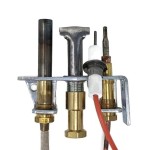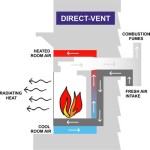Ashley Fireplace Inserts: A Comprehensive Guide
Ashley Furniture Industries, Inc., commonly known as Ashley Furniture, is a prominent name in the home furnishing sector. While widely recognized for its sofas, bedroom sets, and dining room furniture, Ashley also offers a range of fireplace inserts designed to provide supplemental heating and aesthetic appeal to residential spaces. These inserts, designed to be installed within existing fireplaces, differ from freestanding electric fireplaces and offer a unique blend of functionality and design.
This article provides a detailed overview of Ashley fireplace inserts, exploring their features, types, installation considerations, maintenance requirements, and factors to consider when deciding if an Ashley fireplace insert is the right choice for a home.
Understanding the Basics of Fireplace Inserts
Before delving into the specifics of Ashley's offerings, it's crucial to understand the general characteristics of fireplace inserts. A fireplace insert is essentially a self-contained heating appliance designed to fit into an existing masonry or factory-built fireplace. Their primary function is to improve the heating efficiency of a traditional fireplace, which often loses a significant amount of heat up the chimney. Inserts achieve this by creating a sealed combustion chamber and using a fan (in many models) to circulate heated air into the room.
Fireplace inserts are available in various fuel types, including wood, gas (both natural gas and propane), and electricity. Each fuel type has its own advantages and disadvantages regarding heating efficiency, cost, environmental impact, and ease of use. The choice of fuel type often depends on factors such as availability of fuel source, personal preference, and existing infrastructure within the home.
Unlike open fireplaces, fireplace inserts are closed systems, meaning they burn fuel more efficiently and produce less pollution. They are also safer, as the enclosed design reduces the risk of sparks, embers, and carbon monoxide poisoning. Many modern inserts are equipped with safety features such as oxygen depletion sensors (ODS) and automatic shut-off mechanisms.
Key Features and Technologies in Ashley Fireplace Inserts
Ashley fireplace inserts, like those from other manufacturers, incorporate various features and technologies designed to enhance their performance, aesthetics, and user experience. These features often vary depending on the specific model and fuel type.
Electric Models: Ashley electric fireplace inserts often focus on visual appeal and ease of use. Many models feature adjustable flame effects, allowing the user to customize the appearance of the fire. These flame effects are typically created using LED technology, which is energy-efficient and long-lasting. Some models also include ember beds that glow and flicker, further enhancing the realism. Electric inserts typically offer adjustable heat settings, allowing the user to control the amount of heat produced. They also often come with remote controls for convenient operation.
Heating Efficiency and Output: The heating efficiency of a fireplace insert is a crucial factor to consider. Efficiency is typically measured as a percentage, indicating the proportion of fuel energy that is converted into usable heat. A higher efficiency rating means that less fuel is wasted and more heat is delivered to the room. Ashley, like other manufacturers, may provide BTU (British Thermal Units) ratings for their inserts, indicating the amount of heat they can produce per hour. It is important to select an insert with a BTU output that is appropriate for the size of the room to be heated. Overly powerful inserts may overheat the space, while underpowered inserts may not provide sufficient warmth.
Design and Aesthetics: Beyond their functional aspects, Ashley fireplace inserts are designed to enhance the visual appeal of a room. They are available in a range of styles, from traditional to contemporary, to complement different décor preferences. The inserts often feature decorative fronts or surrounds, which can be made of materials such as cast iron, steel, or ceramic. The design of the firebox, including the arrangement of logs (in gas and electric models) or the view of the burning flames (in wood-burning models), is also an important aesthetic consideration. The size and shape of the insert should also be compatible with the existing fireplace opening.
Safety Features: Safety is paramount when it comes to fireplace inserts. Ashley inserts typically incorporate multiple safety features to protect users. Electric models often include overheat protection, which automatically shuts off the unit if it becomes too hot. Gas models may have oxygen depletion sensors (ODS), which detect low oxygen levels and shut off the gas supply to prevent carbon monoxide buildup. Wood-burning models should meet stringent safety standards and be properly installed to prevent chimney fires.
Types of Ashley Fireplace Inserts and Fuel Options
Ashley offers primarily electric fireplace inserts. Understanding the differences between these types is crucial for selecting the best option for a home.
Electric Fireplace Inserts: These inserts use electricity to generate heat and create the illusion of a real fire. They are typically the easiest to install and operate, requiring only a standard electrical outlet. Electric inserts are also the most versatile in terms of placement, as they do not require a chimney or venting system. However, they may not produce as much heat as gas or wood-burning inserts, and the visual appeal of the artificial flames may not be as convincing to some users. Electric inserts are a good choice for those who prioritize convenience, ease of use, and aesthetic appeal over maximum heating power.
Fuel Considerations: While Ashley primarily offers electric models, it is worth mentioning the considerations for other fuel types in the broader context of fireplace inserts. The choice of fuel type impacts various factors, including operating costs, environmental impact, maintenance requirements, and heating efficiency. For instance, natural gas is often a relatively inexpensive fuel source, but it requires a gas line to be installed. Wood-burning inserts offer a traditional aesthetic and a substantial amount of heat, but they also require a supply of firewood and regular chimney cleaning.
Installation and Maintenance Requirements
Proper installation and regular maintenance are essential for ensuring the safe and efficient operation of any fireplace insert. The specific requirements vary depending on the type of insert and the manufacturer's instructions.
Electric Inserts: Installation of electric fireplace inserts is generally straightforward and can often be done by the homeowner. The primary requirement is a standard electrical outlet. However, it is important to follow the manufacturer's instructions carefully to ensure that the insert is properly positioned and secured within the fireplace opening. Regular maintenance of electric inserts typically involves cleaning the unit with a soft cloth and occasionally replacing the LED bulbs.
General Installation Considerations: Regardless of the fuel type, certain general considerations apply to the installation of all fireplace inserts. It is crucial to ensure that the fireplace and chimney are in good condition and meet all applicable safety codes. In many cases, a professional inspection may be required before installing an insert. The size of the insert should be compatible with the size of the fireplace opening. Proper ventilation is essential for gas and wood-burning inserts to prevent the buildup of carbon monoxide and other harmful gases. In some cases, a chimney liner may be required to ensure proper drafting.
Maintenance Schedules: Regular maintenance is crucial for keeping a fireplace insert operating safely and efficiently. The frequency and type of maintenance depend on the fuel type and the amount of usage. For electric inserts, regular cleaning is usually sufficient. For gas inserts, it is recommended to have the unit serviced annually by a qualified technician. This may involve inspecting the gas lines, cleaning the burners, and checking the safety features. For wood-burning inserts, it is essential to have the chimney cleaned regularly to remove creosote buildup, which can cause chimney fires. The frequency of chimney cleaning depends on the amount of wood burned, but it is generally recommended to have it cleaned at least once a year.
Factors to Consider When Choosing an Ashley Fireplace Insert
Selecting the right fireplace insert involves carefully considering various factors, including the intended use, budget, fuel availability, and aesthetic preferences.
Heating Needs: The primary purpose of a fireplace insert is to provide supplemental heating. It is important to assess the heating needs of the room or area to be heated and select an insert with an appropriate BTU output. Consider the size of the room, the insulation level, the number of windows, and the climate. If the primary goal is to heat a large space, a gas or wood-burning insert may be a better choice than an electric insert. If the main purpose is to add ambiance and provide some supplemental heat, an electric insert may be sufficient.
Budget: The cost of a fireplace insert can vary significantly depending on the fuel type, features, and brand. Electric inserts are typically the least expensive to purchase and install, while gas and wood-burning inserts can be more costly due to the need for gas lines or chimney modifications. It is also important to consider the ongoing operating costs, such as the cost of electricity, gas, or firewood. A comprehensive budget should include the initial purchase price, installation costs, operating expenses, and maintenance fees.
Aesthetic Preferences: A fireplace insert should complement the décor of the room and enhance its visual appeal. Consider the style of the existing fireplace and the overall design of the room. Ashley offers a range of styles, from traditional to contemporary, to suit different tastes. Pay attention to the design of the firebox, the arrangement of logs or flames, and the materials used in the surround. Choose an insert that will seamlessly integrate into the existing space and create a warm and inviting atmosphere.
Installation Requirements and Local Regulations: Before purchasing a fireplace insert, it is essential to research the installation requirements and any local regulations that may apply. Some municipalities may require permits for installing gas or wood-burning inserts. It is also crucial to ensure that the fireplace and chimney meet all applicable safety codes. Consult with a qualified contractor or inspector to determine if any modifications or repairs are needed before installing the insert.

Entertainment Accessories Electric Infrared Fireplace Insert Ashley

Ashley Hearth S 26 In 1 200 Sq Ft Epa Certified Wood Burning Fireplace Insert Aw1820e The Home Depot

Signature Design By Ashley Fireplaces Entertainment Accessories W100 22 Wide Fireplace Insert Electric From The Furniture Department Llc

W10002 By Ashley Furniture Entertainment Accessories Electric Fireplace Insert Snugglers

Ashley Hearth S 26 In 1 200 Sq Ft Epa Certified Wood Burning Fireplace Insert Aw1820e The Home Depot

Ashley Hearth S 26 In 1 200 Sq Ft Epa Certified Wood Burning Fireplace Insert Aw1820e The Home Depot

W10002 By Ashley Furniture Entertainment Accessories Electric Fireplace Insert Snugglers
Ashley Insert Questions And Suggestions Hearth Com Forums Home

W100 01 Ashley Furniture Fireplace Insert

Ashley Hearth Aw1820e Wood Stove Insert Solid Biofuels
Related Posts








